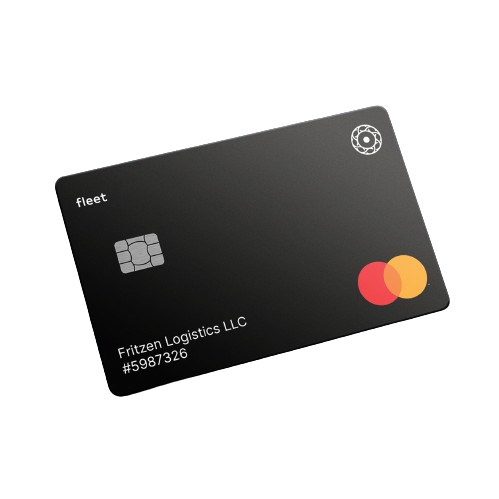Six Tips on How to Manage a Delivery Business
Delivery businesses have always had to plan for common hurdles faced by small and large fleets. But in light of today’s mounting pressures (rising fuel costs, customer demand, and other industry-specific constraints) successfully managing a delivery business is an even greater operational challenge.
Fortunately, optimizing your processes can help you thrive in a competitive atmosphere. Bolstering your operations, employee satisfaction, and customer experience can all ultimately shore up your bottom line.
Below, we’ll discuss five tips on how to manage a delivery business in the era of eCommerce, rapid service delivery, and an increasingly eager consumer public.
Practicing Delivery Fleet Management
Your vehicles and drivers are at the heart of your business, and your success hinges entirely on them.
This makes the core goals of effective fleet management twofold:
- Ensuring your drivers are safe, satisfied, and supported
- Ensuring your vehicles are properly used and maintained
By using the following guidelines to accomplish both of these tasks, you’ll be poised to drive more long-term value to the business.
Tip #1: Prioritize Preventative Vehicle Maintenance
One of your most pressing tasks is ensuring that the vehicles in your fleet are always in safe working condition. You can accomplish this by performing scheduled inspections, servicing, and fleet repairs to proactively minimize vehicle breakdowns.
Moreover, addressing small issues early on (oil changes, tire rotations, fluid checks, brake changes, etc.) enables you to nip them in the bud before they get out of hand. Doing so can help you avert:
- Supply chain complications – Consider the extra pressure placed on drivers in your fleet when a single vehicle is out of commission, even for a few days. Your delivery capacity will be significantly hampered, creating a ripple effect that impacts everyone, from your dispatcher to your customers.
- Liability concerns – Consider the potential liability issues if a fatal accident involves a vehicle that hasn’t received proper maintenance or repair. During the investigation, you could be liable for negligence, which could impact your business’ reputation and ability to operate.
Preventative maintenance empowers you to reduce operational costs, maximize vehicle availability, protect your drivers, and (if you eventually plan to sell them) increase resale value.
To protect your company and start developing an effective preventative maintenance program, consider:
- Nominating a fleet manager/inspector
- Creating inspection and maintenance schedules
- Prioritizing vehicles that require the most attention
- Performing daily routine vehicle checks
- Training drivers to use and maintain their vehicles
- Working with highly qualified mechanics
- Maintaining detailed maintenance schedules and records
Tip #2: Focus on Worker Safety
Occupational hazards exist in every industry, but delivery services consistently rank in the US’s top 10 most dangerous jobs. In 2019, the Bureau of Labor Statistics reported that more than 20% of all workplace fatalities were delivery drivers transporting goods.
From slips and trips to vehicle collisions and crime, many obstacles can contribute to the overall risk profile of your company and employees. And these risks, particularly those related to vehicle collisions, are magnified when the pressure they face increases. As JD Supra notes:
“Companies are constantly rushing their delivery drivers, whether they are employees or independent contractors, to transport more packages at a faster pace… Some delivery drivers feel pressured to exceed the speed limit, roll through stop signs, and otherwise pay less attention to the road and more attention to the clock and to the dispatcher constantly demanding more deliveries in less time.”
Simply put, companies that rush their delivery drivers experience higher rates of serious workplace injuries.
So, how can you protect your employees?
You can start by:
- Providing ongoing intensive delivery driver training and safety education
- Establishing formal delivery driver safety policies
- Outlining a no distracted driving policy
- Performing routine preventative maintenance
- Hiring only highly-qualified and reputable drivers
- Using caller IDs
- Keeping detailed records
- Using camera and GPS systems
- Using product handling equipment for heavier items
- Rewarding good driver behavior and performance
When you establish how to start a delivery business with contract drivers, be sure to prioritize their safety.
Tip #3: Manage Fuel Costs
Setting an effective budget and operating strategy starts with knowing how much you’re spending and where. And while there are dozens of fixed and variable costs you must account for, fuel expenses are one the most critical for your bottom line.
Naturally, the vehicles in your local delivery fleet will impact your total fuel costs, seeing as semi-trucks will consume more fuel than delivery vans or cars. Regardless, fuel will likely account for anywhere from 20% to 40% of a delivery company's operating budget.
For example, the average annual cost of operating a commercial truck is $180,000. That figure breaks down to a $1.38 average per mile operating cost. Of that total expense, the largest operating expense by far is diesel fuel, with the average truck consuming more than $70,000 worth of diesel.
And now that fuel costs have reached historic highs, this is an even greater expense. One way to alleviate this burden is by adopting fleet fuel cards. Not only can these can help you save money with exclusive fuel discounts, but with smoother workflows and instant payroll, you can increase driver retention.
Ideally, look for a card that:
- Is universally accepted
- Can be used for vehicle expenses
- Comes with best-in-class security features and controls
- Provides top-tier discounts with no spend minimums or limits.
Tip #4: Streamline Last Mile Deliveries
Are you responsible for transporting goods to their ultimate destination? If so, you need to optimize your last mile processes to ensure that the right order reaches the customer quickly every time.
The final leg of the delivery service journey is known as the last mile. And despite accounting for the shortest local delivery stage, it typically represents more than half of the total cost of shipping a product.
Guy Courtin, VP of Industry and Advanced Technology at Tecsys, notes:
“Customers want deliveries to be free and fast, despite the fact that actually getting the product to them is the most expensive and time-consuming step in the supply chain process. In fact, the last mile accounts for 53% of the total cost of shipping, and every additional inefficiency adds up.”
Myriad factors contribute to the last mile delivery problem, but the primary culprits include:
- Inefficient driving
- Poor route planning
- Failed deliveries
Knowing this, it’s crucial to keep your fleet current with up-to-date automation and analytics technologies like vehicle routing and driver analysis software. The more you can modernize, the more you’ll be able to streamline last mile processes and slash excess costs.
Tip #5: Focus On Customer Communication
Whether you’re transporting the goods to the next stage in the chain of custody or are delivering them to the customer’s doorstep, customer correspondence is vital for any modern delivery company’s success.
Today’s consumers have high expectations for the services a delivery business provides, and relying on old-school track-and-trace technologies won’t cut it amid the competition. Accustomed to eCommerce and instant food delivery cadences, customers want real-time visibility and communication throughout the entire process.
This includes information about:
- Delivery order status
- Driver location
- Delivery route
- Estimated arrival time
- Package delivery status
- Delivery issues
Whether you use push notifications to keep your customers accountable for a package’s status or rely on smart tracking and dynamic route optimization, there are dozens of ways to modernize your delivery business. Incorporating these types of technologies will dramatically improve the customer experience and help mitigate customer expectations, and thus, their satisfaction with your services rendered.
Tip #6: Exercise Discernment When Investing in Your Fleet
Developing a judicious business model regarding fleet investments can significantly impact your operating costs and bottom line.
Before making any concrete decisions about your fleet force, consider:
- Do you plan on buying the vehicles in your delivery fleet? Will they be new or used?
- Alternatively, do you plan on leasing your vehicles?
- Will you work with contracted drivers who have their own vehicles?
Every delivery operation should determine the type and number of vehicles they require to reach their customers. Once that’s settled, you’ll then need to decide whether you’re leasing or buying and from whom.
If you plan to acquire a vehicle, you should approach this sales process cautiously. Purchasing vehicles can be a major investment, particularly if your company operates at scale. If purchasing a vehicle is the best decision for the business, your next step is to ascertain how many miles you plan to put on each vehicle before decommissioning or reselling them.
Overall, investing in your fleet constitutes one of the biggest financing and performance decisions you’ll make as a company. But by coupling that choice with procedures that streamline every other phase of the delivery process, you’ll be optimally positioned to reap the benefits for your partners, drivers, and customers down the line.
{{CTA}}
AtoB — A Powerful Fleet Management Tool
The delivery business is booming. As a result, it’s becoming more competitive with each passing year. To thrive in such a saturated market (and to meet customers’ lofty expectations) you must pay special attention to your fleet management protocol.
At AtoB, our fleet fuel cards can help you manage your operating costs. These secure fuel cards provide exclusive discounts, smarter delivery management strategies, and centralized payroll processing. And because fuel is likely your largest expense, every cent you save will go towards improving your bottom line.
To calculate how much you could save and start slimming costs, start your AtoB fuel card application with AtoB today.
Sources:
Bureau of Labor Statistics. Fatal Occupational Injuries By Occupation 2019.
https://www.bls.gov/iif/oshwc/cfoi/cftb0332.htm
JD Supra. Dangers Delivery Drivers Face.
https://www.jdsupra.com/legalnews/dangers-delivery-drivers-face-2697544/
Truckers Report. The Real Cost of Trucking – Per Mile Operating Cost of a Commercial Truck.
https://www.thetruckersreport.com/infographics/cost-of-trucking/
Forbes. A Mainstream Gig: The Last Mile Is Shorter Than Ever.
https://www.forbes.com/sites/forbestechcouncil/2022/06/01/a-mainstream-gig-the-last-mile-is-shorter-than-ever/?sh=1f59a5729244
Get started with AtoB

Reviewed by
Vedant Khamesra is the driving force behind product management at AtoB. Specializing in strategic partnerships, SMB solutions, and new product development, Vedant seamlessly navigates P&L responsibilities while leading product execution and strategy. He is fueled by AtoB's mission to empower truckers and fleets with intelligent financial tools and services, making their lives easier and more rewarding.
Start saving today


